|
In 2024, leadership training is evolving rapidly to meet the demands of a dynamic, interconnected world. As businesses and organizations face unprecedented challenges and opportunities, innovative approaches to leadership development are becoming essential. Here, we explore some of the cutting-edge strategies transforming leadership training and provide a must-read list of five influential leadership books for 2024. Emerging Trends in Leadership Training 1. AI-Driven Leadership Development Artificial Intelligence (AI) is revolutionizing leadership training by providing personalized learning experiences. AI can analyze an individual's strengths, weaknesses, and learning styles to create tailored development plans. This approach ensures that leaders receive the specific training they need to excel in their roles. AI-powered platforms offer real-time feedback, simulate decision-making scenarios, and provide actionable insights, making leadership training more effective and efficient. 2. Mindfulness and Emotional Intelligence The importance of mindfulness and emotional intelligence (EI) in leadership is gaining recognition. Training programs now focus on developing leaders' self-awareness, empathy, and emotional regulation. Techniques such as mindfulness meditation, reflective practices, and emotional intelligence assessments help leaders manage stress, make better decisions, and build stronger relationships with their teams. This holistic approach fosters a more resilient and compassionate leadership style. 3. Virtual Reality (VR) and Augmented Reality (AR) VR and AR technologies are creating immersive learning experiences that transform leadership training. These tools allow leaders to practice critical skills in realistic, simulated environments. For example, VR can simulate high-pressure situations where leaders must navigate complex challenges, providing a safe space to experiment and learn. AR can overlay digital information in real-world settings, offering interactive learning experiences that enhance comprehension and retention. 4. Diversity, Equity, and Inclusion (DEI) Training In 2024, DEI is a central focus of leadership training. Programs emphasize the importance of creating inclusive cultures, recognizing unconscious biases, and promoting diversity in all its forms. Leaders are trained to foster environments where all team members feel valued and empowered. This training is crucial for building cohesive, innovative teams that can navigate the complexities of a globalized world. 5. Hybrid Leadership Models The shift towards remote and hybrid work environments has necessitated new leadership models. Training programs now address the unique challenges of leading distributed teams. Leaders learn to leverage digital tools for communication and collaboration, maintain team cohesion, and ensure productivity in a virtual setting. This approach prepares leaders to effectively manage and inspire teams regardless of their physical location. Must-Read Leadership Books for 2024 To complement these innovative training approaches, here are five cutting-edge leadership books that are essential reads for 2024: 1. "AI Leadership: Navigating the Future" by Dr. Sarah JacobsDr. Sarah Jacobs explores the intersection of AI and leadership, offering insights into how leaders can harness AI to drive innovation and growth. The book provides practical strategies for integrating AI into leadership practices and preparing for the future of work. 2. "Mindful Leadership: Leading with Presence and Purpose" by Emma LeeEmma Lee delves into the principles of mindful leadership, emphasizing the importance of self-awareness, compassion, and intentionality. This book is a guide to cultivating a mindful leadership style that fosters resilience and enhances team dynamics. 3. "The VR Leader: Immersive Training for the Future" by Alex Carter Alex Carter examines the role of VR and AR in leadership development. The book showcases case studies and practical applications of immersive technologies, demonstrating how they can be used to build critical leadership skills in a virtual environment. 4. "Leading with Equity: Transforming Organizations for the Better" by Dr. Maria HernandezDr. Maria Hernandez offers a comprehensive guide to DEI in leadership. The book provides actionable steps for creating inclusive cultures, addressing biases, and promoting diversity, making it a must-read for leaders committed to equity and inclusion. 5. "The Hybrid Leader: Thriving in a Remote-First World" by James RobertsJames Roberts addresses the challenges and opportunities of leading in a hybrid work environment. The book offers strategies for maintaining team cohesion, leveraging digital tools, and ensuring productivity in a remote-first world. As we navigate the complexities of 2024, leadership training must evolve to meet new challenges and opportunities. AI-driven development, mindfulness and emotional intelligence, immersive technologies, DEI training, and hybrid leadership models are at the forefront of this transformation. By embracing these innovative approaches and diving into the latest thought leadership, today's leaders can equip themselves with the skills and insights needed to thrive in an ever-changing landscape. Stay ahead of the curve and transform your leadership journey with these cutting-edge strategies and must-read books for 2024.
0 Comments
Networking often gets reduced to a superficial exchange of business cards and LinkedIn connections. But at Go Savvy Social, we believe true networking goes far beyond this. It’s about disrupting traditional engagement and fueling development through strategic, cross-industry connections. A true networker is a catalyst for growth, both for themselves and for their organization, by building authentic relationships that stand the test of time. The Essence of True Networking True networking isn’t about immediate gains; it’s about playing the long game. It’s about giving without expecting immediate returns, understanding that when done right, those connections will eventually unfold into opportunities. At its core, true networking is about creating and nurturing genuine relationships. It’s the art of reciprocity, empathy, and authenticity. True networkers don’t just collect contacts; they build alliances that drive exponential growth and innovation. The Power of Cross-Industry Networking At Go Savvy Social, we emphasize the power of cross-industry networking. This means stepping out of your comfort zone and forging connections in diverse fields. Why? Because real growth happens at the intersection of ideas, where different perspectives collide and create something new. Why Cross-Industry Networking Matters
Practical Tips for Effective Cross-Industry Networking
The Impact on Organizational Success Organizations benefit immensely from employees who excel at cross-industry networking. These individuals bring fresh ideas, new partnerships, and innovative strategies. Here’s how cross-industry networking drives organizational success:
At Go Savvy Social, we don’t just talk about networking; we disrupt the way it’s done. True networking isn’t about quick wins; it’s about building lasting, meaningful connections that drive long-term success. It’s about giving without expecting immediate returns, knowing that with time, those connections will unfold into powerful opportunities. A true networker isn’t confined by industry boundaries. They are curious, open-minded, and proactive, bridging gaps and fostering growth across diverse fields. This approach not only enriches their personal and professional lives but also significantly contributes to their organization’s success. So, let’s elevate our networking game. Let’s disrupt traditional engagement, fuel development, and create a tapestry of relationships that support and propel each other forward. At Go Savvy Social, we’re not just navigating social platforms; we’re seizing every opportunity for exponential growth. Be a true networker—bridge industries, foster innovation, and drive collective success. Organizations have more options than ever when it comes to hiring talent. Two popular approaches are fractional employment and contract work. Both offer unique advantages and can be strategically utilized depending on your organizational needs. Here, we’ll explore the differences between fractional employment and contract work, and discuss why you might choose one over the other.
What is Fractional Employment? Fractional employment involves hiring an employee to work part-time or on a project basis, typically in a strategic or high-level role. Fractional employees are integrated into the company’s culture and operations, often working with multiple clients or companies. They bring specialized expertise to the table and can be a valuable asset to organizations that need high-level skills without the commitment of a full-time salary. What is Contract Work? Contract work, on the other hand, involves hiring an independent contractor or freelancer to complete a specific project or task. Contractors are not employees of the company and typically work independently, often off-site. They are usually hired for their specialized skills and are brought in to address short-term needs or to add capacity during busy periods. Advantages of Fractional Employment
Advantages of Contract Work
Choosing Between Fractional Employment and Contract Work When to Choose Fractional Employment:
When to Choose Contract Work:
Both fractional employment and contract work offer unique advantages that can enhance organizational efficiency and flexibility. The key is to understand your specific needs and choose the option that aligns best with your business goals. At Go Savvy Social, we support both avenues to ensure your businesses makes the right strategic partnership, ensuring you have the right talent at the right time to drive growth and success. By evaluating the benefits of each approach, you can optimize your hiring strategy and create a more agile and effective workforce. It's a situation many of us have found ourselves in: staring at the clock, twiddling our thumbs, and feeling utterly bored at work. Whether it's due to a lack of challenging tasks, a slow period in the workload, or simply a sense of disengagement, boredom at work can be frustrating and demotivating. However, rather than resigning yourself to hours of mindless scrolling or daydreaming about your next vacation, there are proactive steps you can take to turn your boredom into productivity. 1. Take Initiative Instead of waiting for tasks to come your way, seize the opportunity to take initiative and seek out new challenges. Reach out to your manager or colleagues and express your willingness to take on additional responsibilities or assist with ongoing projects. By demonstrating your proactive attitude and eagerness to contribute, you not only combat boredom but also showcase your value as a motivated team member. 2. Learn Something New Use periods of downtime as an opportunity to expand your skillset and knowledge base. Take online courses, attend webinars, or delve into industry-related articles and publications. Investing in your professional development not only keeps your mind engaged but also enhances your value to the organization and opens up new opportunities for growth. 3. Organize and Prioritize Use idle time to organize your workspace, declutter your inbox, or update your to-do list. By tackling administrative tasks that have been lingering on your plate, you create a sense of accomplishment and set yourself up for greater efficiency when busier times roll around. Prioritize your tasks based on importance and urgency, ensuring that you stay focused and productive throughout the day. 4. Connect with Colleagues Take advantage of downtime to foster connections with your colleagues. Strike up conversations, participate in team-building activities, or collaborate on non-work-related projects. Building strong relationships with your coworkers not only makes the workday more enjoyable but also enhances collaboration and teamwork within the organization. 5. Reflect and Set Goals Use moments of boredom as an opportunity for self-reflection and goal setting. Reflect on your career aspirations, strengths, and areas for development, and set clear, actionable goals to guide your professional growth. By taking a proactive approach to your career, you empower yourself to make meaningful progress and shape your future success. Boredom at work is a common challenge, but it's also an opportunity for growth and development. By taking initiative, learning new skills, organizing your tasks, connecting with colleagues, and setting goals, you can transform moments of idleness into opportunities for productivity and personal advancement. Embrace the challenge, seize the opportunity, and make the most of every moment at work. At Go Savvy Social, we are thrilled to be part of the vibrant Princeton community, especially during such an exciting time. The arrival of the world's largest rubber duck is more than just a fun attraction; it's a symbol of community spirit, engagement, and the power of coming together for a shared experience.
A Tradition of Community and Connection Princeton has always been a community that values tradition and togetherness. Hosting the world's largest duck is a testament to our commitment to fostering a sense of unity and excitement among residents and local businesses. This giant, iconic figure is not only a visual spectacle but also a catalyst for bringing people together, creating memories, and sparking joy across all ages. Networking and Business Growth The presence of the world's largest duck in Princeton offers unique opportunities for networking and business growth. Community events centered around the duck, such as the Duckorating Contest, provide platforms for local businesses to showcase their creativity and connect with potential customers. These events are not just about fun; they also facilitate meaningful interactions and collaborations among business owners, fostering a supportive and thriving local economy. Engaging the Community Events like the Duckorating Contest and the Rum River Festival are perfect examples of how the world's largest duck can engage the community. These activities encourage participation from residents, schools, and businesses, making everyone feel like a part of something special. The excitement of finding Pinky, our little duckling, adds an element of adventure and fun, further enhancing community involvement. Embracing Innovation At Go Savvy Social, we believe in embracing both tradition and innovation. The world's largest duck symbolizes this blend perfectly. While it represents a nostalgic, playful icon, it also stands as a modern tool for engagement and marketing. By leveraging this unique attraction, we can bring innovative marketing strategies to life, drawing attention to Princeton and its vibrant community. Join the Celebration The world's largest duck in Princeton is more than just an event; it's a celebration of our community's spirit, creativity, and unity. We invite everyone to join us in this exciting time, participate in the events, and experience the joy and connection that this giant rubber duck brings. For more details about the world's largest duck and related events, visit our website and explore how you can be part of this incredible journey. Let's make waves together in Princeton! Useful Links: Let's celebrate the world's largest duck and the amazing community of Princeton! #GoSavvySocial #PrincetonMN #WorldsLargestDuck #CommunityEngagement #LocalTraditions #InnovativeMarketing In many organizations, there’s a common misconception among employees that work simply flows in effortlessly, independent of their individual efforts. This passive outlook can stagnate an organization's growth and dampen the collective energy of its workforce. However, the truth is quite the opposite. The vitality of any organization depends heavily on the proactive spirits of its employees—those who are hungry for success and take initiative to drive the organization forward.
Cultivating a Proactive Workplace Culture The notion that one can sit back and watch as success magically unfolds is not just unrealistic; it undermines the potential of the entire team. Every employee plays a crucial role in the machinery of success, and when individuals adopt a passive stance, the entire organization suffers. It's vital for employees to understand that if they feel bored or unchallenged, the onus is on them to seek out opportunities for engagement and improvement. "Good Enough" Isn’t Good Enough Settling for "good enough" is a dangerous mindset that can lead to mediocrity. Encouraging a culture where "good enough" is challenged, and excellence is pursued can significantly elevate the quality of output and innovation. As leaders and colleagues, fostering an environment where striving for the best is the norm can lead to remarkable transformations within the workplace. Recognizing Different Capacities and Performance Levels It’s important to acknowledge that employees have different capacities and performance levels. Not everyone will excel in the same areas or at the same pace, but every individual has the potential to contribute uniquely and valuably. Leadership should focus on harnessing these diverse strengths, encouraging employees to support each other's growth, and stepping up to fill gaps with their unique skills. Volunteer to Lead Change Change is often met with resistance, primarily due to the discomfort it brings. However, volunteering to be an agent of change can set you apart as a leader and innovator within your organization. By embracing hard work and demonstrating adaptability, you pave the way for others to follow, and you help cultivate a robust work environment where challenges are viewed as opportunities to excel. Today’s Efforts, Tomorrow’s Success The efforts you put in today will determine the success of tomorrow. By adopting a mindset that everyday at work is an opportunity to excel and improve, you motivate yourself and those around you to give their best. This proactive approach not only accelerates personal growth but also drives the organization towards its goals more effectively. To truly thrive in today’s competitive environment, every employee must embrace change and hard work. Being proactive, challenging the status quo, and striving for excellence are all crucial for personal and organizational success. Remember, in a culture that values initiative and effort, those who are willing to give a quality go every day will invariably find themselves ahead of the curve. Let’s inspire and lead the charge toward a future where every day is an opportunity to excel and drive meaningful change. In the workplace, tenure is often equated with credibility and deep industry knowledge. This longstanding belief holds that the more years one has under their belt, the more valuable they are to the organization. However, this perspective can sometimes lead to misconceptions about the role of experienced professionals in a rapidly evolving business environment. The concept of tenure is traditionally seen as a badge of honor, suggesting that those who have been in the industry longest are the most acquainted with its ins and outs. But this view can also create barriers. There is a risk that tenure might be associated with a reluctance to embrace new ideas, a resistance to change, or a lack of engagement with modern innovations. It may even lead to the perception that tenured employees are less willing to train or mentor newcomers effectively, under the assumption that "no one could possibly understand the industry like they do." However, industries are not static; they are fluid and constantly changing. Technological advancements, economic shifts, and new consumer demands often require even the most experienced professionals to reevaluate their knowledge and learn anew. This dynamic landscape raises important questions: Has there ever been a time when you, as a tenured professional, had to start learning again from square one? Have there been moments when the industry’s evolution demanded a completely new approach or strategy? Credibility, therefore, should not only be measured by the length of one’s tenure but by one's ability to adapt and remain relevant in the face of change. True professional credibility is about the ability to impact others positively. It’s about imparting wisdom, fostering innovation, and preparing the next generation of leaders. The real measure of one’s legacy lies in the answers to these questions: When you leave, will people remember just how good you were, or will they carry forward the lessons and values you taught? While tenure brings invaluable experience, its true value is realized when it is used to mentor others, to embrace and lead change, and to leave a lasting impact that transcends personal achievements. As we continue to navigate the complexities of modern industries, let us redefine tenure not just as a count of years but as a commitment to growth—both personal and communal. In this way, tenure becomes not just about time served, but about a legacy built and left for others to build upon. In the evolving landscape of the modern workplace, managing time and attendance has transcended its traditional confines. This is especially true for organizations that harness specialized skill sets, where the dynamics of hourly pay and the power of a shared vision coalesce to drive innovation. The challenge lies in fostering an environment that not only respects the tangible metrics of time and attendance but also, and perhaps more crucially, nurtures the intangible elements of creativity, commitment, and vision. The Traditional Paradigm: Time as Currency Historically, the concept of time and attendance in the workplace has been straightforward: employees are compensated for the hours they work, with the underlying assumption being that presence correlates with productivity. This model, while effective in many scenarios, particularly for routine tasks, often falls short in environments where specialized skills and innovation are at play. For roles that demand a high level of creativity, problem-solving, and specialized expertise, the linear relationship between time spent and value created can become blurred. In these contexts, the innovation mindset thrives not on the quantity of hours logged, but on the quality of ideas generated and executed. Hourly Pay vs. The Power of Vision: A Dichotomy? At the heart of the debate between hourly pay and vision-driven work lies a fundamental question: can the pursuit of innovation be quantified in hours, or is it more intrinsically tied to the alignment with a broader vision? Hourly pay structures, with their clear boundaries and straightforward metrics, offer a sense of security and simplicity. They are easily measurable and provide a direct linkage between effort and reward. However, they might inadvertently place constraints on the innovation mindset, as they prioritize time over outcome, potentially stifling creativity and risk-taking. Conversely, embedding the power of vision into the workplace ethos can unleash unprecedented levels of innovation and engagement. When employees are rallied around a shared vision, their work transcends the transactional nature of hourly compensation. They are motivated by the impact they can create, the problems they can solve, and the future they can shape. Bridging the Gap: Time, Attendance, and Beyond The crux of modern workforce management lies in finding a balance between these paradigms. This involves recognizing the importance of time and attendance while also fostering a culture that values and rewards innovation and alignment with the company's vision. 1. Flexibility in Time Management Adopting flexible time management policies can accommodate the ebb and flow of creative processes. This might include flexible hours, recognizing the value of deep work sessions, and allowing for non-traditional work patterns that cater to peak productivity periods. 2. Outcome-Based Evaluation Shifting the focus from hours worked to outcomes achieved encourages employees to channel their efforts into innovation and efficiency. This approach rewards the realization of ideas and the achievement of goals that align with the company's strategic vision. 3. Cultivating a Vision-Centric Culture Creating a work environment where the company's vision is clearly communicated, embraced, and lived by every team member can transform the approach to work. When employees see how their contributions fit into the larger picture, their motivation shifts from watching the clock to making meaningful progress. 4. Continuous Learning and Skill Development Investing in the continuous development of specialized skill sets ensures that the workforce remains at the forefront of innovation. This not only enhances the company's competitive edge but also reinforces the value placed on employees' growth and contributions beyond mere hours spent. Harmonizing Time, Talent, and Vision The future of work demands a nuanced approach to managing time and attendance, particularly for roles steeped in innovation and specialized skills. By marrying the practicalities of hourly compensation with the aspirational qualities of a shared vision, organizations can cultivate a dynamic and motivated workforce. This workforce is not bound by the ticking clock but propelled by the collective pursuit of innovation, excellence, and meaningful impact. Maintaining a culture of accountability is crucial for the success and sustainability of an organization. However, fostering accountability should not come at the expense of overlooking the individual capacities and personal boundaries of employees. Striking this delicate balance is key to creating a productive, respectful, and inclusive workplace.
Understanding Accountability Accountability in the workplace goes beyond merely assigning tasks and expecting them to be completed. It's about creating an ecosystem where employees feel a sense of ownership over their responsibilities and are motivated to deliver their best work. This requires clear communication, mutual respect, and a deep understanding of each individual's role within the organization. Recognizing Individual Capacities Each employee brings a unique set of skills, experiences, and personal circumstances to the table. Recognizing and appreciating this diversity is the first step toward establishing a culture of accountability that respects individual capacities. Leaders must ensure that workloads are distributed fairly and that expectations align with each employee's abilities and resources. Overloading employees without consideration for their capacity can lead to burnout, decreased productivity, and a decline in morale. Respecting Personal Boundaries In the pursuit of accountability, it's essential to respect the personal boundaries established by employees. This includes acknowledging their work-life balance, personal commitments, and the need for mental and physical well-being. Encouraging employees to communicate their boundaries and limitations can foster a supportive environment where individuals feel valued and understood. Strategies for Balancing Accountability with Capacity and Boundaries 1. Open Communication Create channels for open and honest communication, allowing employees to express concerns, provide feedback, and discuss their capacities and boundaries without fear of reprisal. 2. Flexible Work Arrangements Consider implementing flexible work arrangements that accommodate different working styles, personal responsibilities, and peak productivity times. 3. Regular Check-ins Schedule regular one-on-one check-ins to discuss progress, address challenges, and reassess workloads and deadlines as necessary. 4. Professional Development Invest in professional development opportunities that allow employees to enhance their skills, increasing their capacity and confidence in managing responsibilities. 5. Recognition and Support Acknowledge and reward achievements and efforts, showing appreciation for hard work and dedication. Offer support and resources to help employees overcome obstacles and succeed in their roles. Accountability is a two-way street that requires a nuanced approach, balancing organizational goals with the individual needs of employees. By recognizing capacities, respecting boundaries, and fostering open communication, leaders can cultivate a culture of accountability that promotes high performance, employee satisfaction, and sustainable success. In doing so, organizations not only achieve their objectives but also support the well-being and growth of their most valuable asset— their people. Elevating Quality of Life: The Impact of Coaching on Culture Development and Organic Marketing3/13/2024 The pursuit of success often consumes our focus, leaving little room for personal growth and development. However, the importance of cultivating a supportive culture and embracing organic marketing strategies cannot be overstated. Enter coaching – a powerful tool that not only enhances individual and team performance but also fosters a positive culture and drives organic growth. Cultivating a Supportive Culture
Coaching plays a pivotal role in improving the quality of life for individuals and teams while driving culture development and organic marketing strategies. By fostering a supportive culture rooted in empowerment, effective communication, and continuous learning, coaching lays the foundation for success. Moreover, coaching enables organizations to embrace organic marketing strategies centered around authenticity, creativity, and adaptability, ultimately driving sustainable growth and success in today's dynamic marketplace. |
AuthorAshly Hughes Archives
June 2024
Categories |
|
© COPYRIGHT 2009. ALL RIGHTS RESERVED.
|






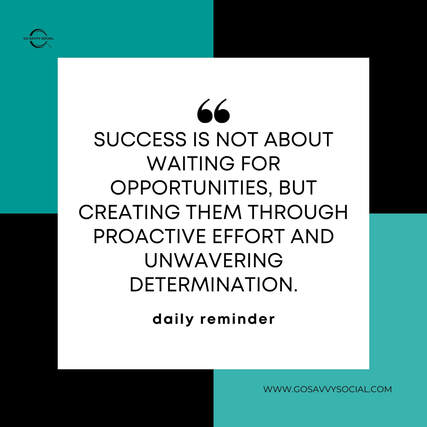
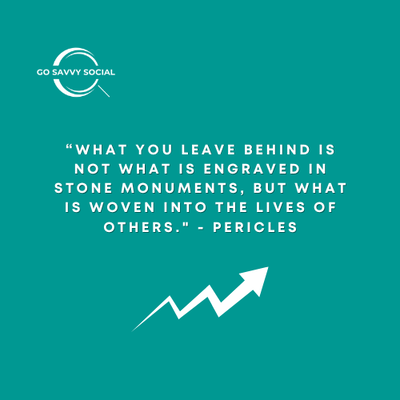
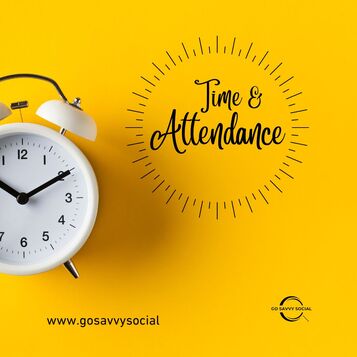
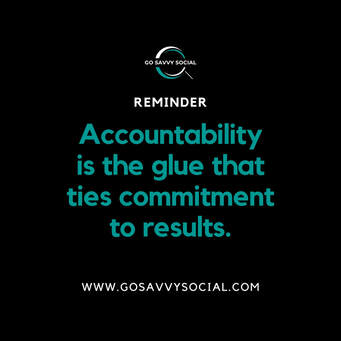
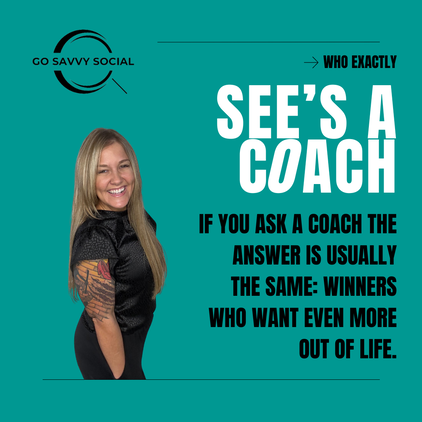
 RSS Feed
RSS Feed
